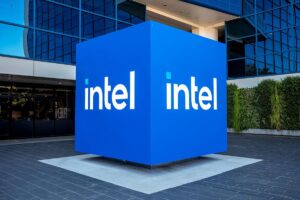Intel Corp. Faces a Crossroads: Lip-Bu Tan Takes the Helm Amidst Industry Challenges
The semiconductor landscape is buzzing following Intel Corp.’s announcement of Lip-Bu Tan as the company’s new CEO, resulting in a significant 15% bump in share prices. Investors are expressing renewed optimism, as Tan—an industry veteran with a strong track record—takes on one of the toughest challenges in tech.
A Change in Leadership
Scheduled to assume his role on March 18, 2024, Tan brings extensive experience, previously leading Cadence Design Systems Inc. for over a decade. Board members are hopeful that Tan’s strategic vision can rejuvenate Intel, which, once an industry titan, has faced numerous setbacks over the years. The circumstances are reminiscent of past transitions at Intel, but the stakes have never been higher.
Challenges Ahead for Intel
Despite its historical dominance, Intel has recently witnessed market-share erosion, manufacturing challenges, and dwindling earnings. The company has had to make some tough financial decisions, including cutting approximately 15,000 jobs, as it grapples with a staggering debt load. With its stock trading at just over $23.70—down more than 50% year-over-year—the situation calls for a transformative approach.
Tan’s commitment is strong, as reflected in his memo to employees: “I’m confident I can turn the business around. That’s not to say it will be easy. It won’t be." Indeed, the barriers are daunting, especially against rivals like Nvidia, which has capitalized on the AI boom at a rapid pace.
The Road to Recovery
Analysts are cautiously optimistic about Tan’s leadership potential. Stacy Rasgon from Bernstein notes that if there is anyone capable of reversing Intel’s fortunes, it would be Lip-Bu Tan. Moreover, a recent upgrade of Intel stocks by Bank of America Corp. to a "neutral" designation signals a shift in sentiment among investors, underscoring the importance of effective leadership during turbulent times.
Tan inherits a complex legacy of ambition set forth by his predecessor, Pat Gelsinger, who faced criticism for failing to deliver innovative products that could compete with the current AI chips dominating the market. The new CEO is poised not only to steer product development but also to cement Intel as a world-class foundry—an endeavor still in its infancy under Gelsinger’s leadership.
Navigating Industry Landscape and Competitors
Intel remains one of the largest chipmakers globally, generating over $50 billion in annual sales. Its processors are still intricately woven into the fabric of over 70% of the world’s PCs and servers, maintaining a substantial market footprint. However, missed opportunities in product innovation have ceded ground to competitors like AMD, and the urgent need for new developments in AI technology has intensified scrutiny on Intel’s current standing.
Over the years, the competitive landscape has reshaped dramatically. Once considered a beacon of semiconductor innovation, Intel has now fallen behind, mainly due to challenges in maintaining product relevance. With investors contemplating mergers and potential breakups, Tan’s strategic decisions will be pivotal.
Tan’s Background: A Recipe for Success?
Lip-Bu Tan’s journey has been one of noteworthy achievements. Hailing from Malaysia and studying at esteemed institutions like MIT, his expertise in nuclear engineering and business acumen form a compelling narrative. His leadership at Cadence resulted in over a 3,200% appreciation in stock price during his tenure—a performance standard that Intel stakeholders quietly hope will replicate in this new chapter.
Tan’s strategic emphasis on customer-centric innovation will be paramount. He is expected to channel his experience into revitalizing a company that the market is increasingly reevaluating.
Future Prospects for Intel and Tan’s Leadership
As Tan steps into this highly scrutinized role, he must navigate a landscape rife with challenges yet also filled with opportunities. Should he succeed, he won’t just reshape Intel’s future; he may also establish a new benchmark for innovation in the semiconductor industry.
Intel’s existing plans under the Chips and Science Act, backed by nearly $8 billion in government grants, promise a future that hinges on domestic manufacturing capabilities. However, overcoming operational delays and executing on these projects will require not only skilled leadership but also considerable resilience.
The Bottom Line
While the rebuilding of Intel’s stature in the semiconductor market is no small feat, Lip-Bu Tan’s appointment has injected a sense of hope into the industry. How effectively he acts upon his vision will dictate not only the future of Intel but possibly the trajectory of the entire semiconductor sector in the coming years. If history teaches us anything, it’s that in finance and technology, adaptability is key—and the ability to pivot in the face of challenges will ultimately define success.
As this story unfolds, one thing is certain: all eyes will be watching how Tan leverages his experience to navigate Intel’s road to recovery, and whether it will be enough to regain its former glory.

